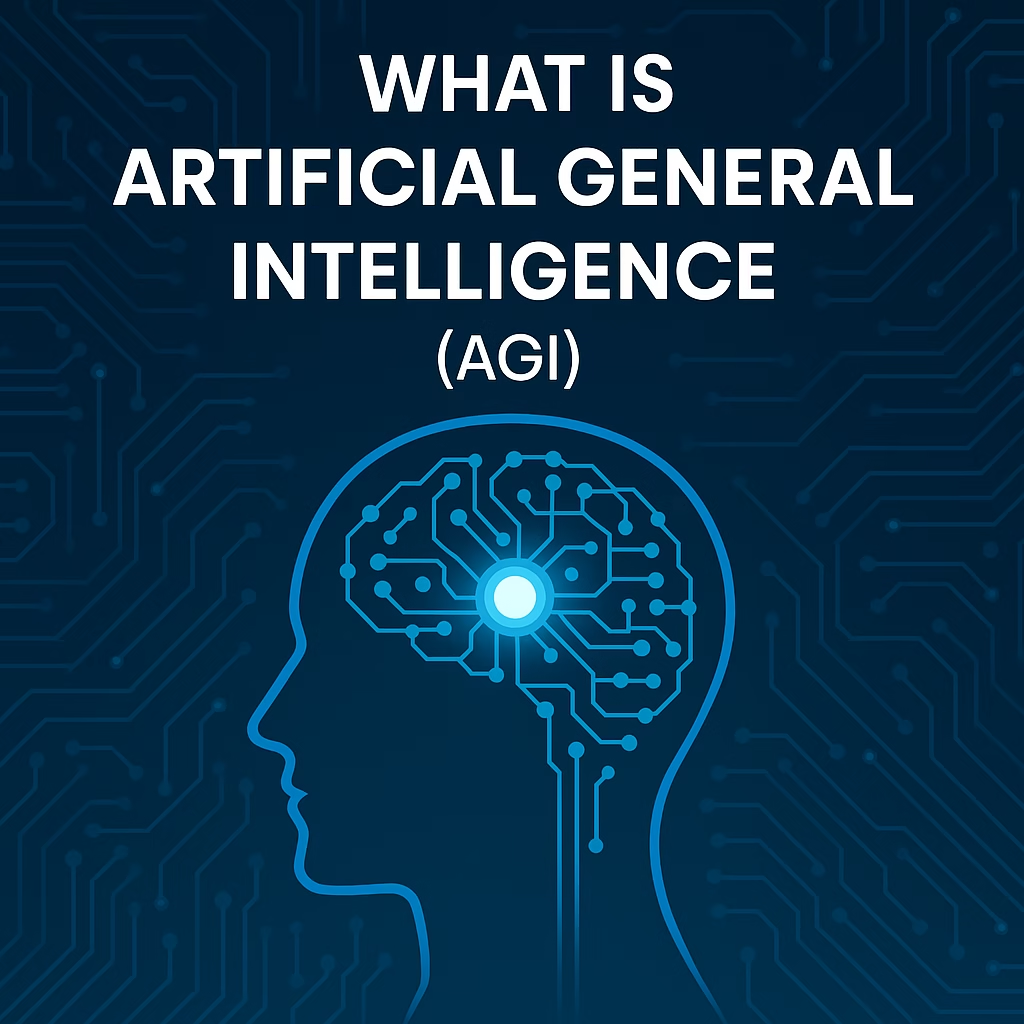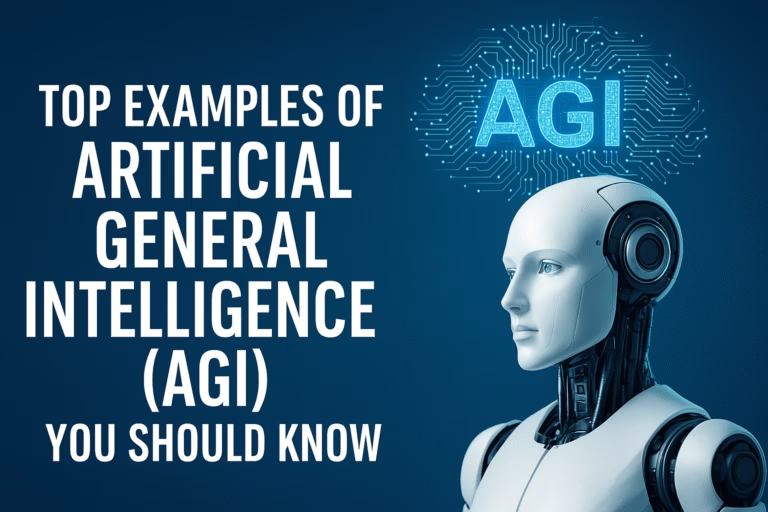What is Artificial General Intelligence (AGI)?

Artificial General Intelligence (AGI) the hypothetical future stage of Artificial Intelligence (AI).
AI has already transformed our daily lives – from voice assistants like Alexa and Siri to advanced tools like ChatGPT and Google Gemini. But all these systems are narrow AI (designed to perform a single, specific task or a narrow range of tasks with high efficiency)
They excel at specific tasks but cannot think or learn beyond their programmed capabilities.
This is where Artificial General Intelligence (AGI) comes in – a concept that has fascinated researchers, entrepreneurs, and science fiction writers for decades.
- Defining Artificial General Intelligence
- Key Characteristics of AGI
- AGI vs. Narrow AI
- Why Does AGI Matter?
- Challenges & Risks
- The Future of AGI
- Conclusion
Defining Artificial General Intelligence
AGI refers to a type of AI that can understand, learn, and apply knowledge across a wide range of tasks — just like a human.
Unlike narrow AI, AGI would possess general problem-solving skills, adaptability, and reasoning abilities that work in multiple domains without explicit reprogramming.
Think of AGI as:
- Not just solving a math problem, but also writing a poem, playing chess, and planning a trip – all with the same system.
- A digital mind that can transfer learning from one field to another (e.g., using medical knowledge to design a healthcare strategy without being specifically trained for it).
Key Characteristics of AGI
- Generalization → Ability to apply knowledge across different fields.
- Adaptability → Can learn new tasks quickly, even in unfamiliar environments.
- Reasoning → Logical thinking, decision-making, and problem-solving.
- Creativity → Generating new ideas and solutions.
- Autonomy → Functioning independently without constant human supervision.
AGI vs. Narrow AI
| Feature | Narrow AI (Today’s AI) | Artificial General Intelligence (Future AI) |
|---|---|---|
| Scope | Specific, limited tasks | Multiple domains, general tasks |
| Learning | Pre-trained, task-focused | Learns & adapts like humans |
| Example | ChatGPT, Google Translate | Hypothetical human-like AI |
| Flexibility | Low | High |
| Human Comparison | Savant in one area | Human-level intelligence |
Why Does AGI Matter?
AGI isn’t just a technological milestone — it could redefine human civilization:
- Healthcare: Diagnose diseases better than doctors.
- Science & Innovation: Make new discoveries at unimaginable speed.
- Productivity: Automate not just routine work, but creative and strategic work too.
- Global Challenges: Help solve climate change, poverty, and space exploration.
Challenges & Risks
With great power comes great responsibility. AGI also brings potential risks:
- Ethical Concerns: Who controls AGI, and how is it used?
- Job Displacement: Large-scale automation could impact employment.
- Safety Risks: A superintelligent AGI acting against human values.
- Control Problem: Ensuring AGI remains aligned with human goals.
Researchers like Nick Bostrom and organizations such as OpenAI, DeepMind, and Anthropic are actively studying how to build safe AGI.
The Future of AGI
While no one has built true AGI yet, progress in large language models, robotics, and neuroscience-inspired computing shows we are inching closer. Predictions vary:
- Some experts believe AGI could arrive by the 2030s,
- Others think it may take several decades — or might never fully happen.
Either way, the pursuit of AGI is reshaping how we think about intelligence, humanity, and technology.
Conclusion
Artificial General Intelligence is the holy grail of AI research – the dream of creating machines that think, reason, and adapt like humans. While we are still living in the age of narrow AI, the journey toward AGI is one of the most exciting and debated frontiers in technology.


One Comment